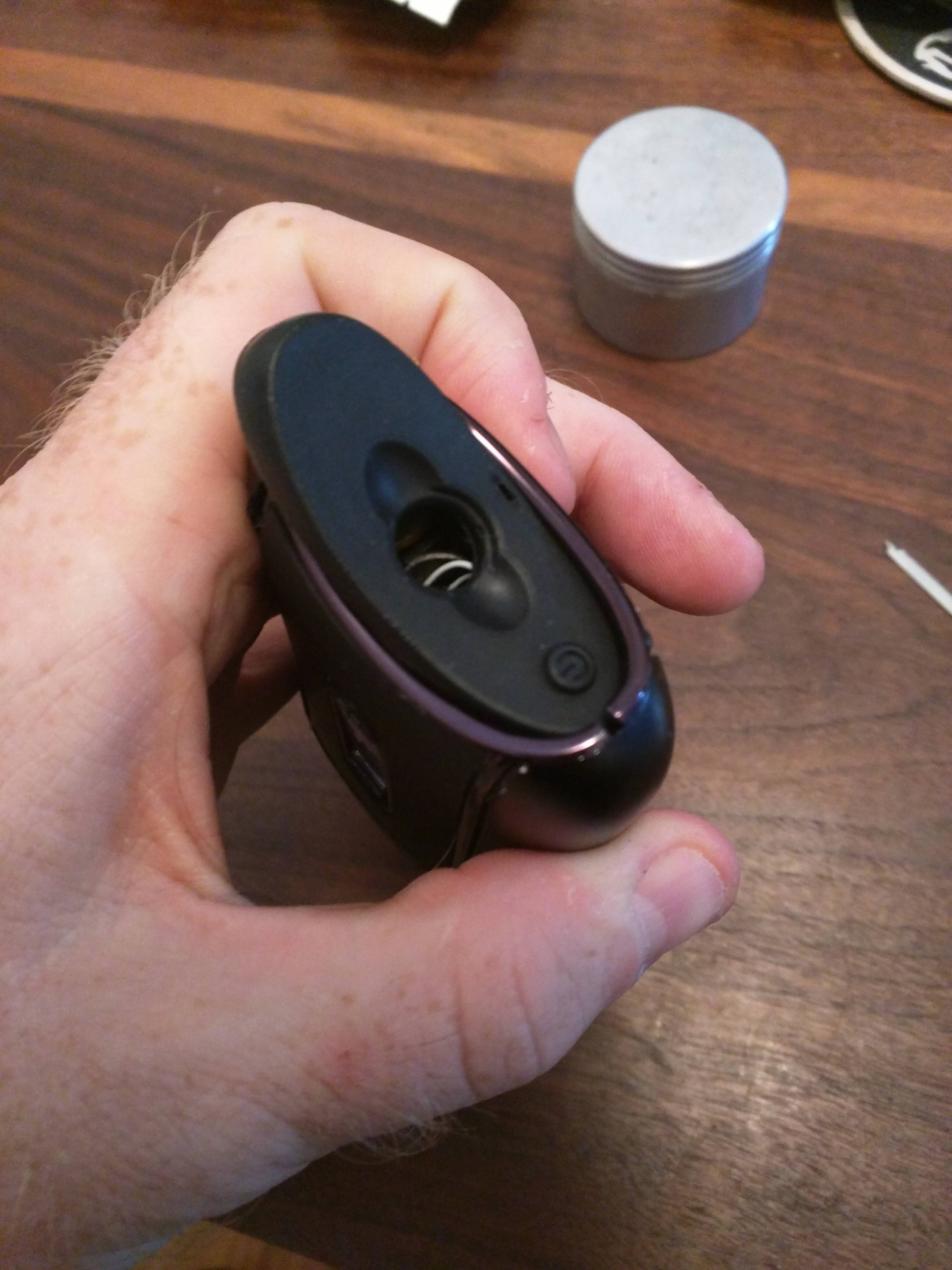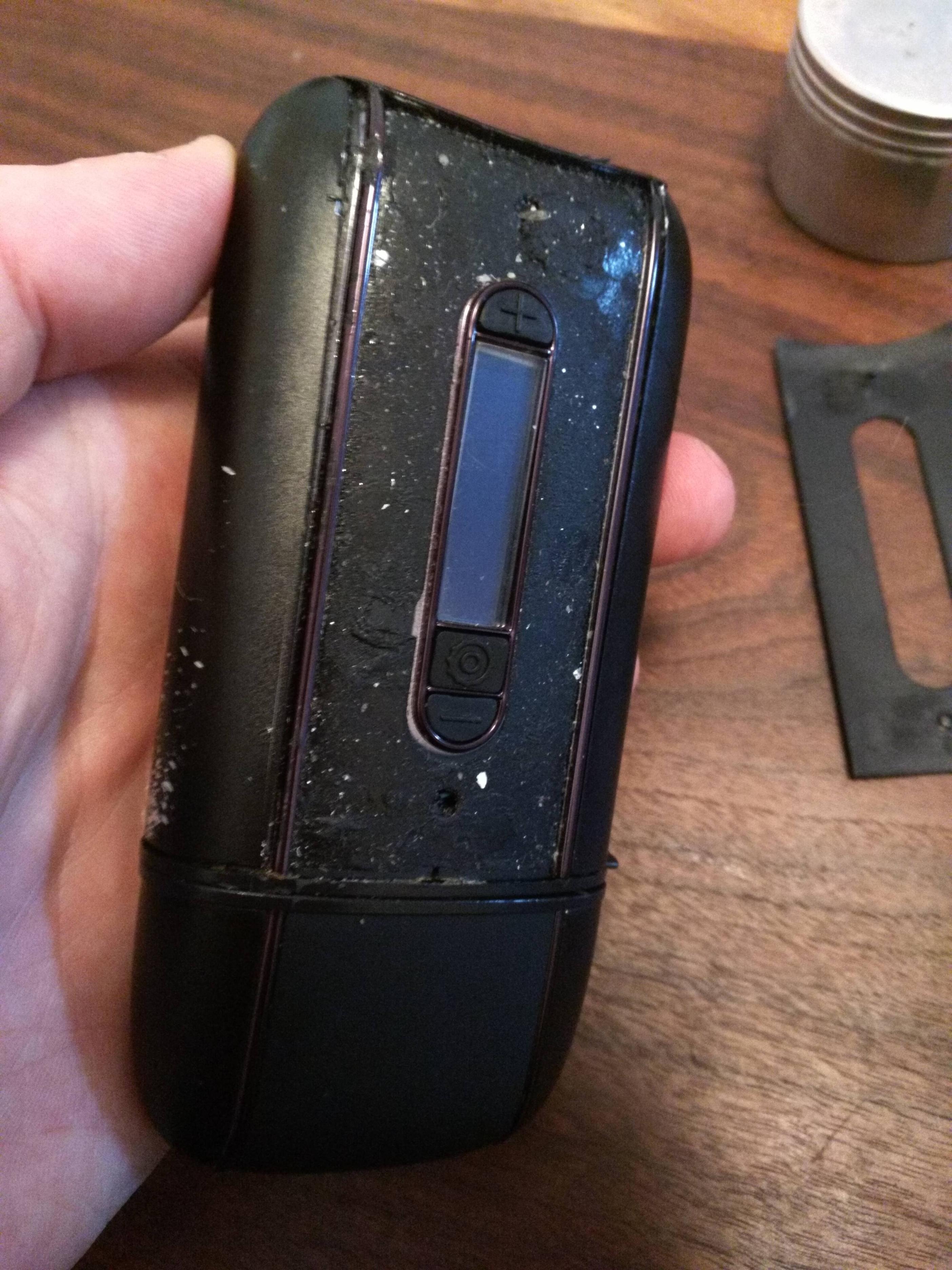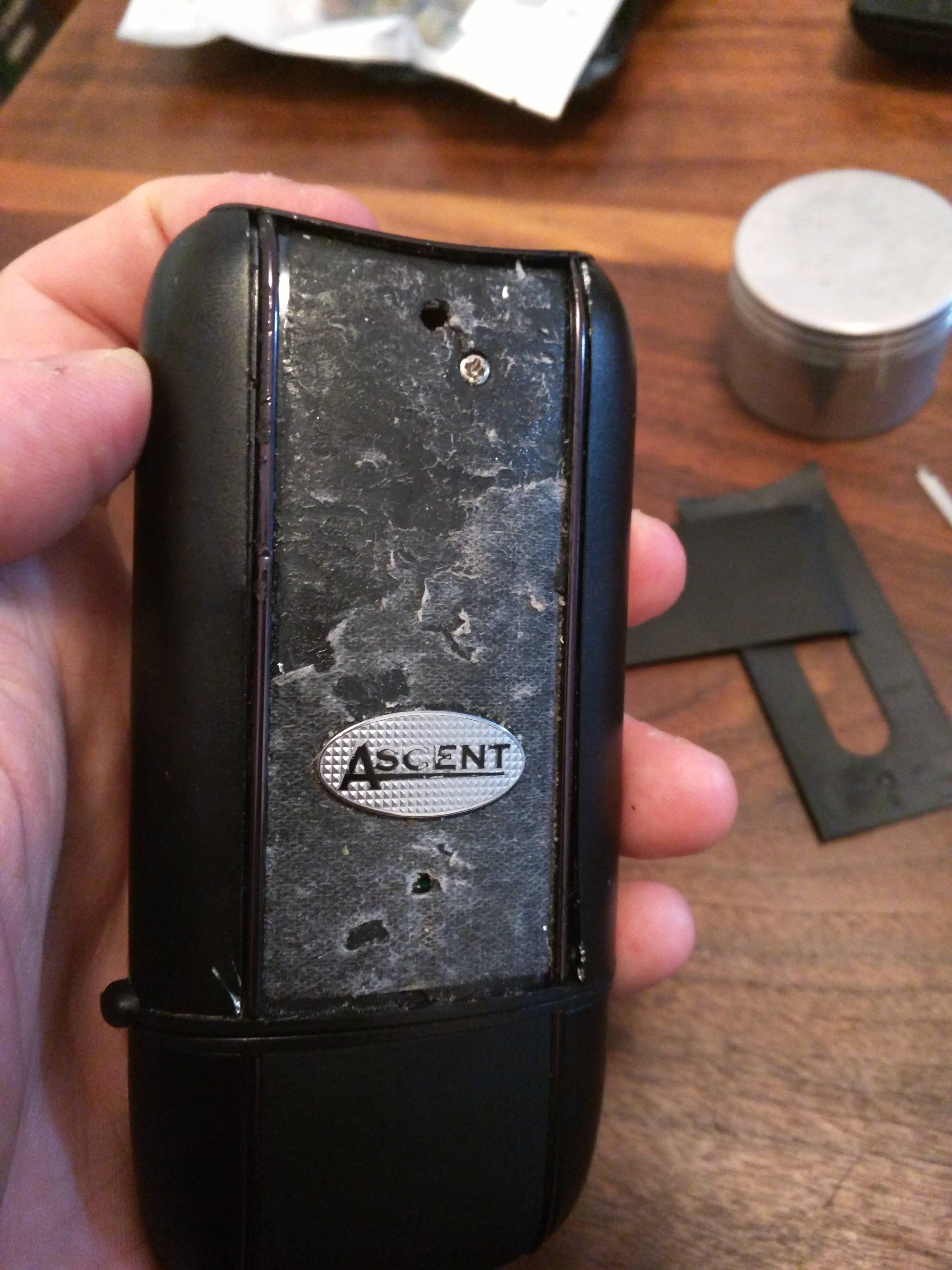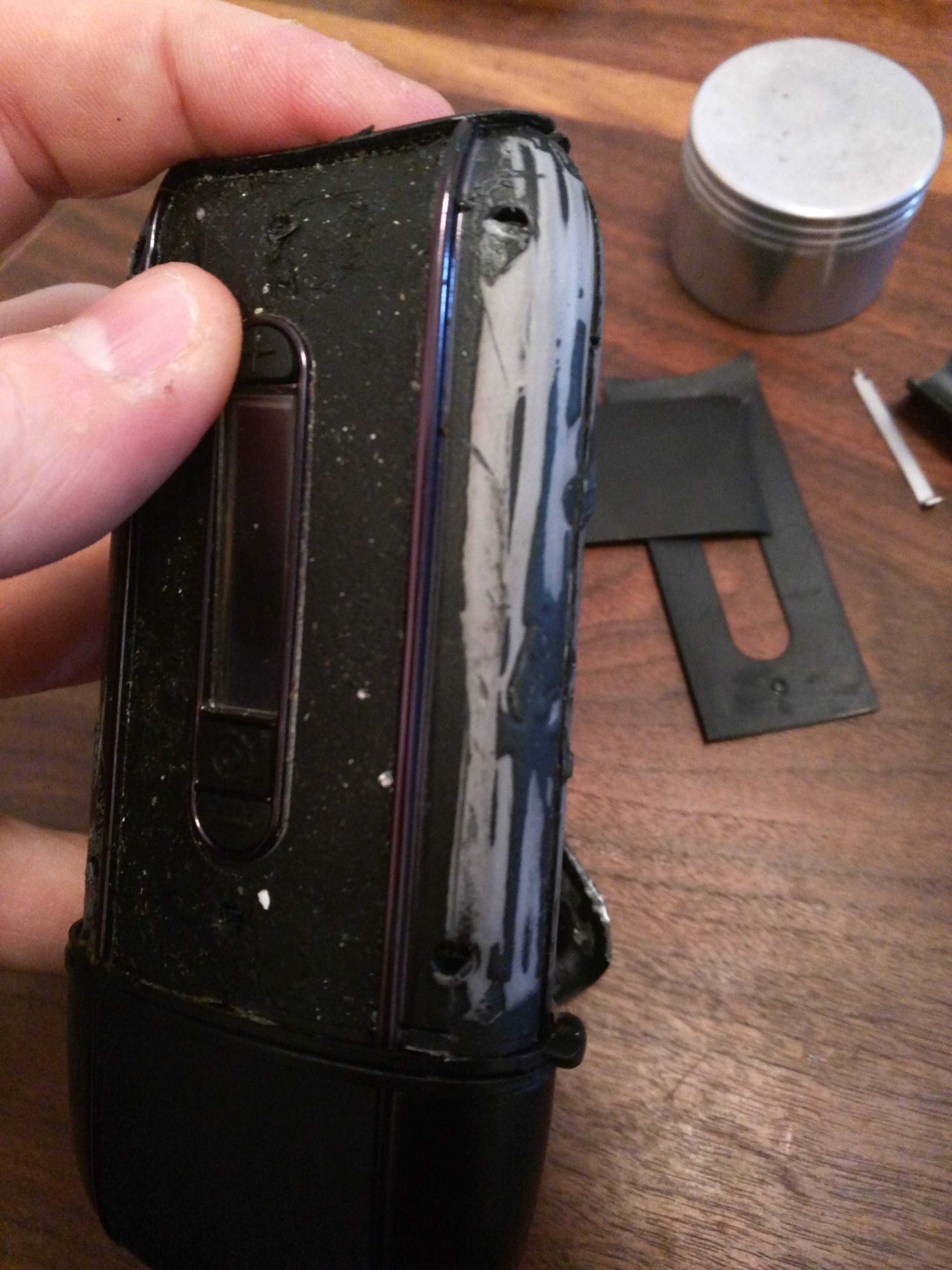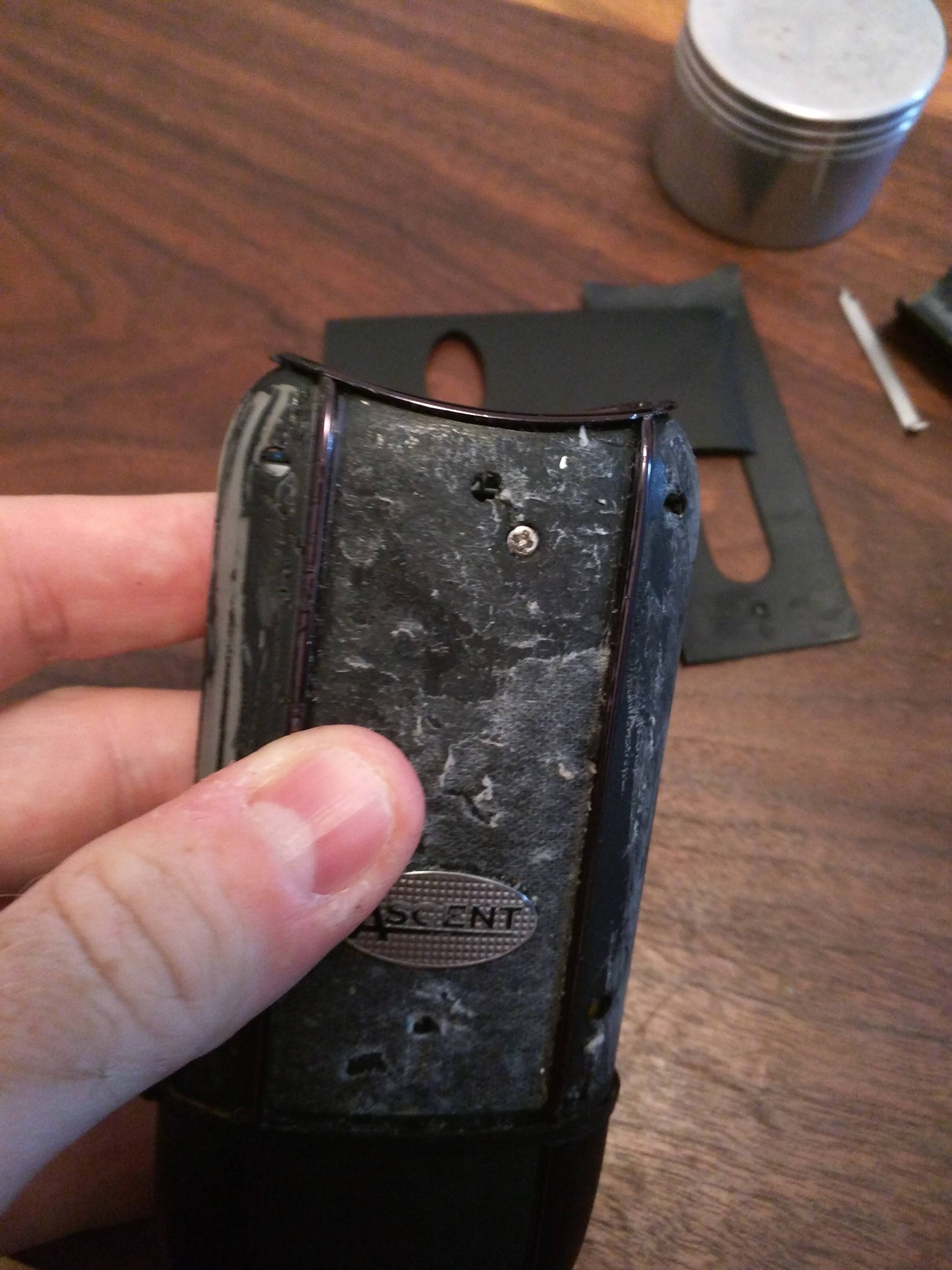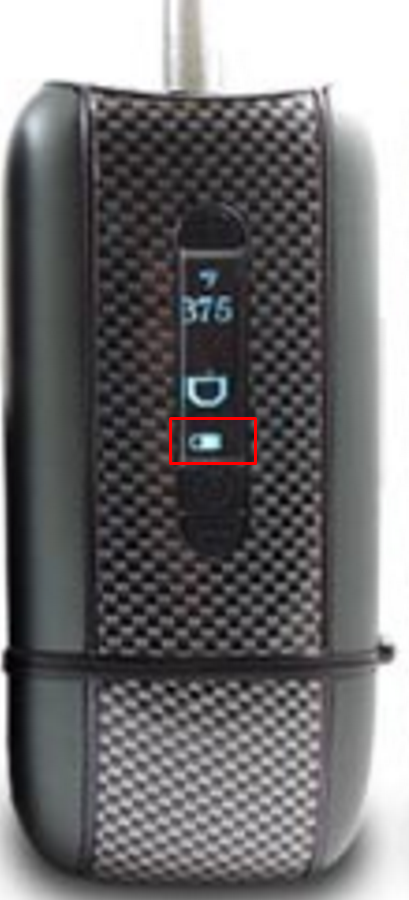For anyone out there who has a Davinci Ascent let me both congratulate you and give you my condolences. It's a fantastic device... as long as it holds up. For the past 4 months my unit has basically not worked when unplugged. It can operate for about 90 seconds (get up to full temperature, maintain for a few, then begins powering down). I've sent the unit back for repair a few times and finally got tired of paying for shipping back to them for what seemed to be (in my opinion) a defective unit.
Knowing what I do about electronics, I determined that it couldn't be that hard to fix. I regularly fix everything from iPods and cell phones to doing circuit board design. Opening it up the first time proved correct. Inside the unit displays very poor craftsmanship. There is a lot of flux all over the board and a lot of "wet" joints on some of the parts. As would be guessed from the two 3.7 volt batteries it appears from some of the markings on the board that the unit uses 3.3v logic for the microcontroller / VCC.
I'm going to talk about two common repairs: replacing the batteries and fixing the switch.
First, opening up the unit may be trivial. The reason I say may is whether or not you've sent the unit back to Davinci in the past. Normally most of the unit is held together with a film adhesive (something like double sided tape). After sending back for repair Davinci may forego this (as they did with my unit after the last repair) with an epoxy. In the case of the film you simply run a razor blade / exacto knife / shim / or small screwdriver in between the parts and slowly separate them.
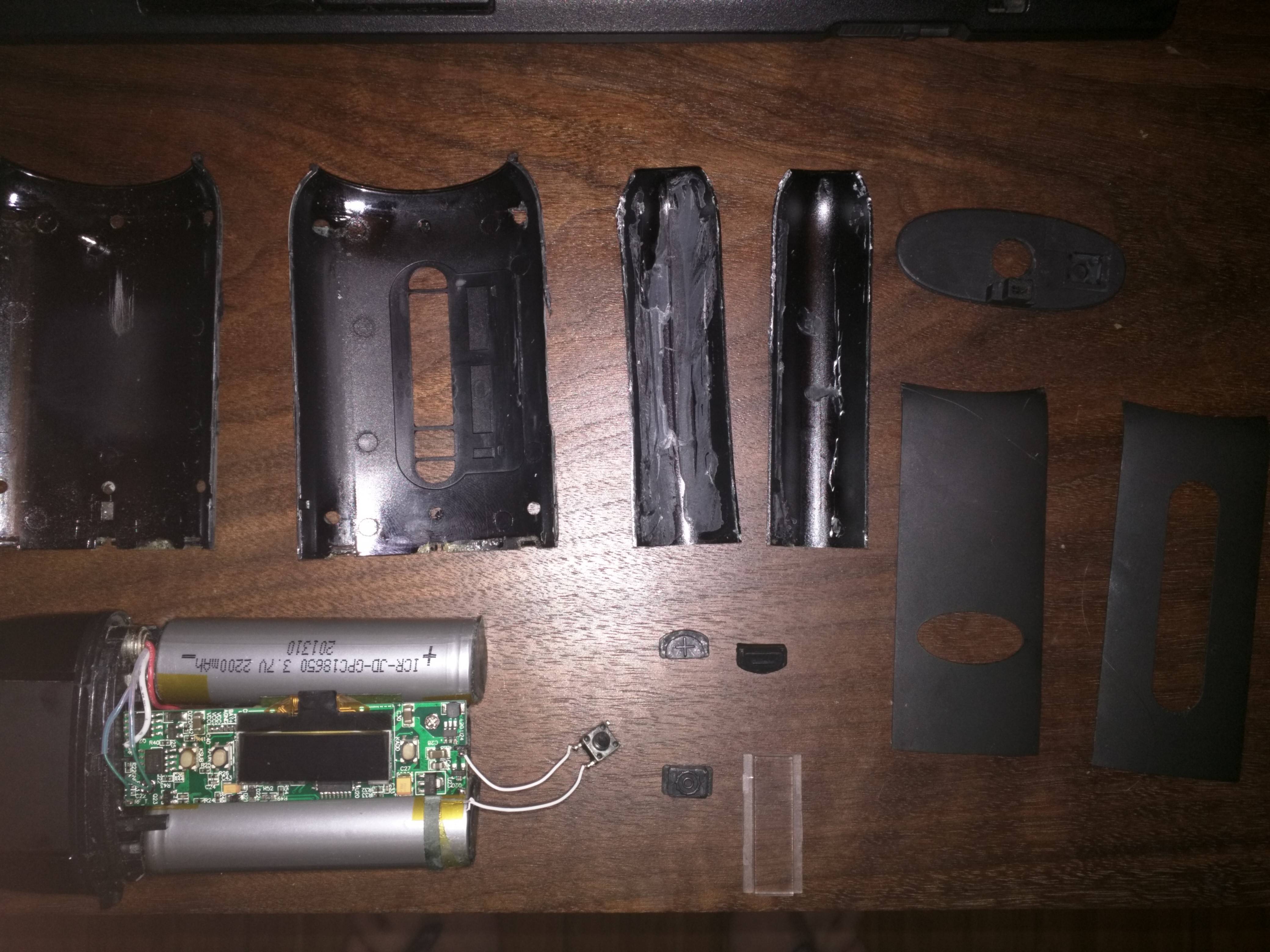
Clockwise from the top left we have the back of the unit, the front of the unit, and the right and left sides respectively. Those combined with the internals and base comprise the five major components of the Ascent. Continuing the top right is the top of the unit with the back and front rubberized pieces, as well as the temperature up, temperature down, function and plastic OLED protection screen.
Inside, the unit uses a standard 18650 battery. These can be purchased from some radio shack / electonics stores (not best buy, but more places that sell parts) and from Amazon. The batteries used in this unit are "flat tops". These types of batteries do not have the normal "nub" which would signify the "positive" side of a battery. Instead they are simply labeled and designed to be directly soldered to. The batteries are marked ICR-JD-GPC-18650 3.7V 2200mAh 201310. In upgrading this unit anything with a rating of ~ 2200mAh (milliamp hours) will get you roughly the same performance. Upgrading to batteries with a higher mAh rating may hold a longer charge, but I didn't assume they put a lot of thought into the charge circuit. Safe to say that you should roughly seek this same type of rating out.
The OLED screen is marked with:
S13B288B2501011
WS13B043101
I was unable to find these identifiers in any major parts listings.
The switch is a simple momentary SPST (single pole, single throw) switch. When the switch is depressed for a few seconds, the unit powers on. After the boot up sequence, the process can be repeated to power the unit off.
Here you can see a broken switch:
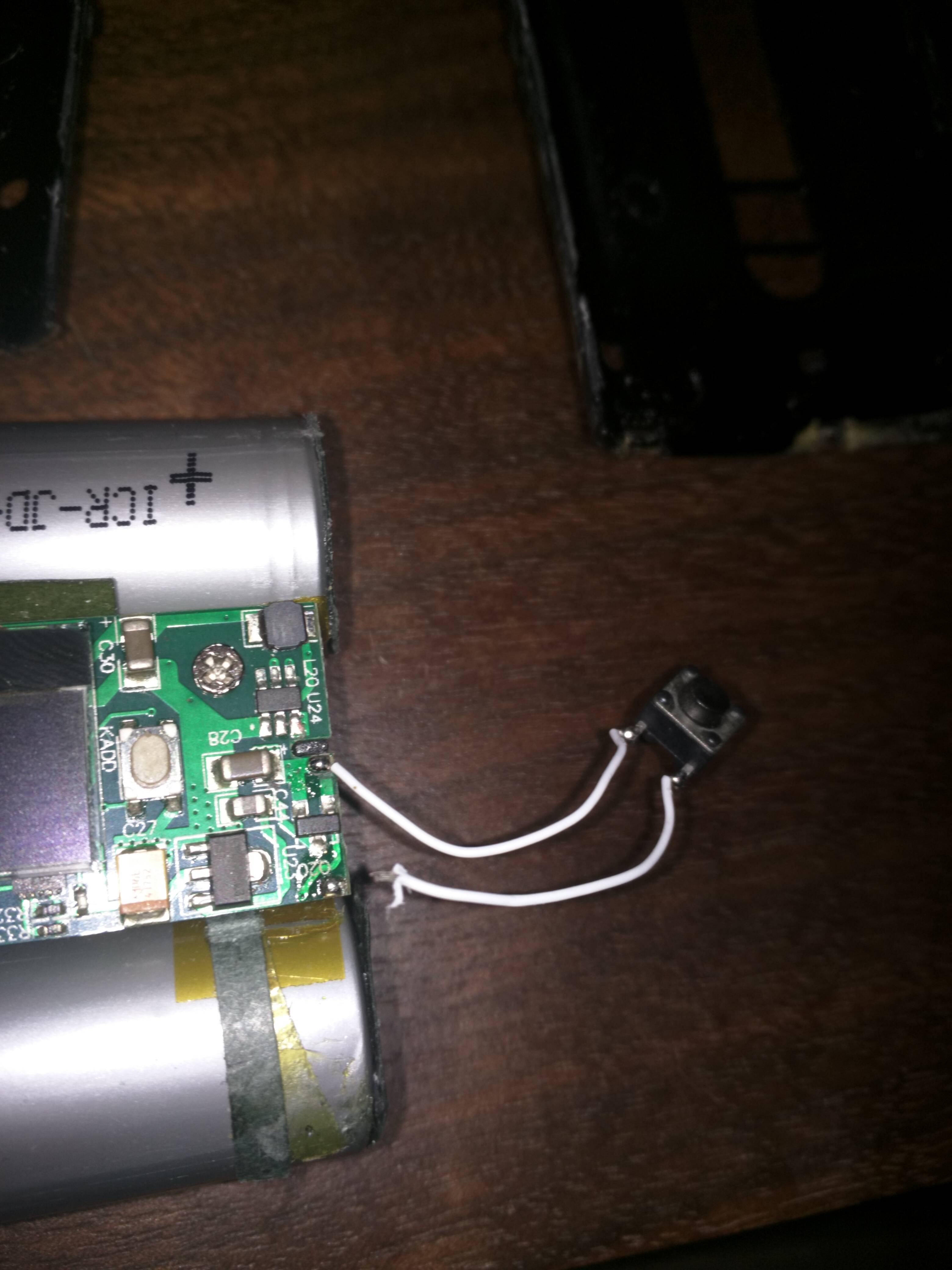
Here is a finished repair:
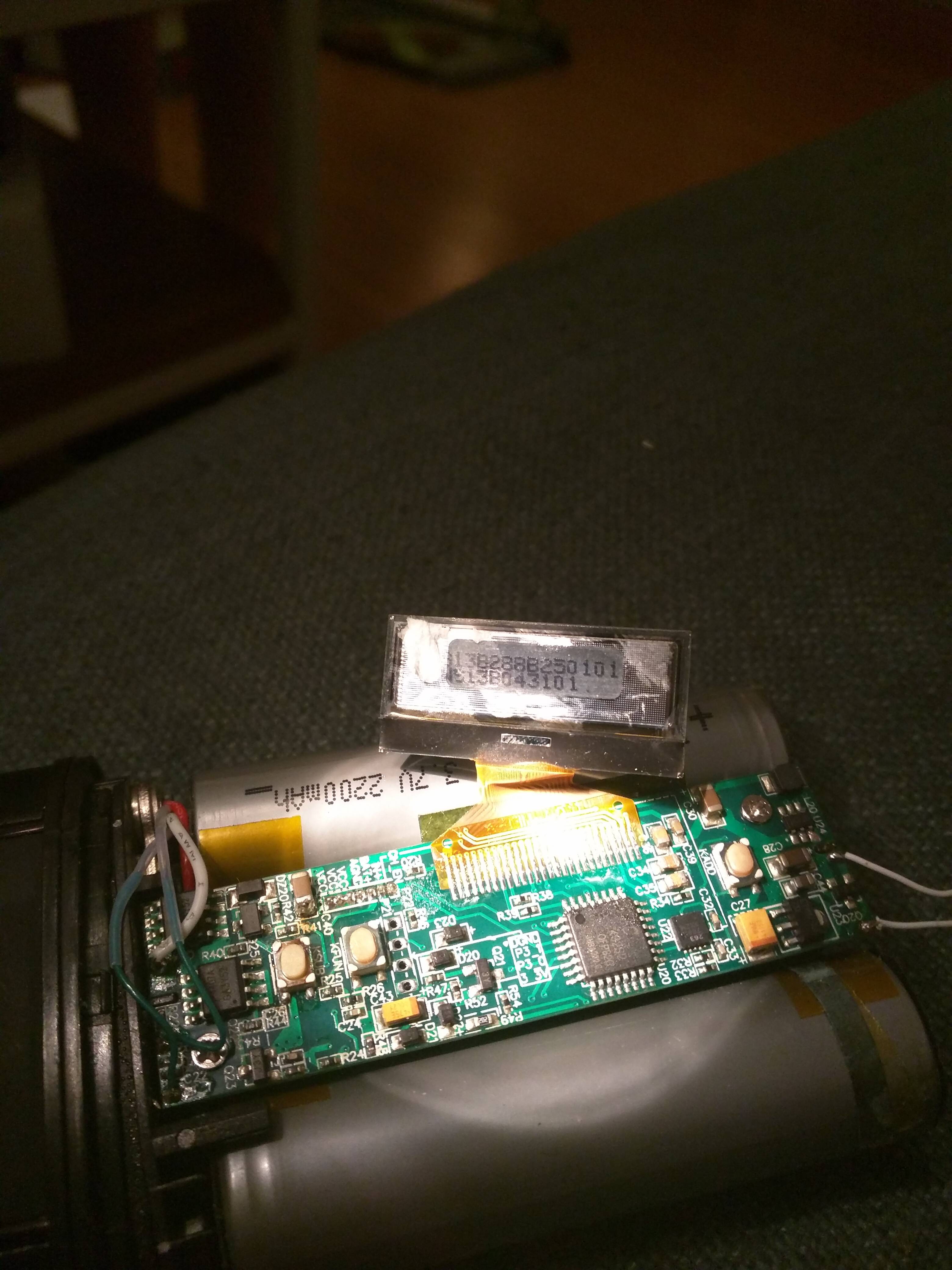
At the top of the unit you can see that there are two solder points where the switch is connected. The wire used is stranded wire of very low quality. As this is not passing a large current high gauge wire isn't needed, but feel free to replace with sturdier wire in the event of doing any work on the switch.
I also took a photo of the back of the internals of the unit as well:
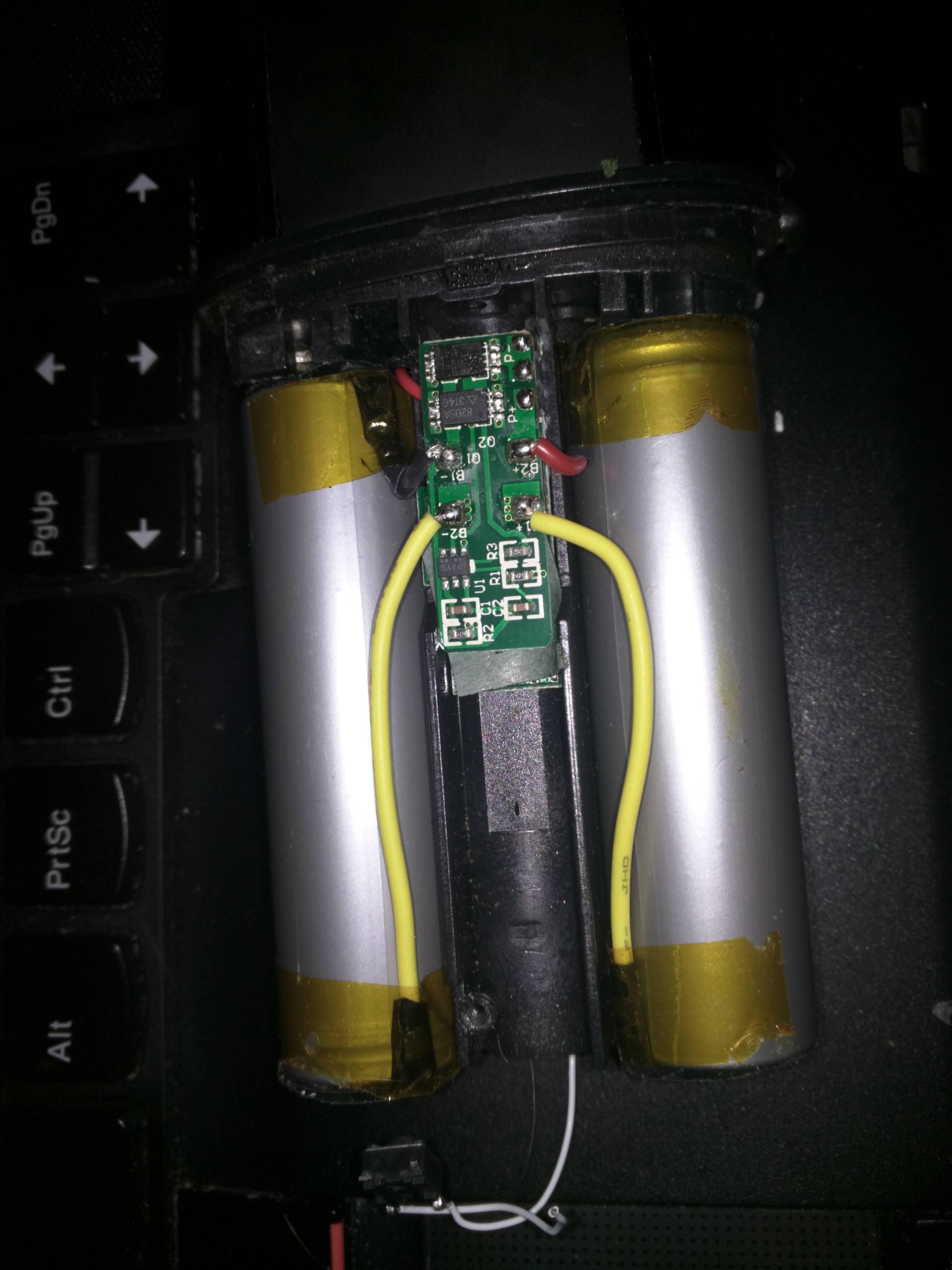
This photo does a wonderful job illustrating my earlier point about poor build quality. The wire used is low quality stranded and I noticed that most of the strands at B1 above were actually already broken. I'm not sure if this is due to a previous repair from Davinci or the manufacturer.
Knowing what I do about electronics, I determined that it couldn't be that hard to fix. I regularly fix everything from iPods and cell phones to doing circuit board design. Opening it up the first time proved correct. Inside the unit displays very poor craftsmanship. There is a lot of flux all over the board and a lot of "wet" joints on some of the parts. As would be guessed from the two 3.7 volt batteries it appears from some of the markings on the board that the unit uses 3.3v logic for the microcontroller / VCC.
I'm going to talk about two common repairs: replacing the batteries and fixing the switch.
First, opening up the unit may be trivial. The reason I say may is whether or not you've sent the unit back to Davinci in the past. Normally most of the unit is held together with a film adhesive (something like double sided tape). After sending back for repair Davinci may forego this (as they did with my unit after the last repair) with an epoxy. In the case of the film you simply run a razor blade / exacto knife / shim / or small screwdriver in between the parts and slowly separate them.

Clockwise from the top left we have the back of the unit, the front of the unit, and the right and left sides respectively. Those combined with the internals and base comprise the five major components of the Ascent. Continuing the top right is the top of the unit with the back and front rubberized pieces, as well as the temperature up, temperature down, function and plastic OLED protection screen.
Inside, the unit uses a standard 18650 battery. These can be purchased from some radio shack / electonics stores (not best buy, but more places that sell parts) and from Amazon. The batteries used in this unit are "flat tops". These types of batteries do not have the normal "nub" which would signify the "positive" side of a battery. Instead they are simply labeled and designed to be directly soldered to. The batteries are marked ICR-JD-GPC-18650 3.7V 2200mAh 201310. In upgrading this unit anything with a rating of ~ 2200mAh (milliamp hours) will get you roughly the same performance. Upgrading to batteries with a higher mAh rating may hold a longer charge, but I didn't assume they put a lot of thought into the charge circuit. Safe to say that you should roughly seek this same type of rating out.
The OLED screen is marked with:
S13B288B2501011
WS13B043101
I was unable to find these identifiers in any major parts listings.
The switch is a simple momentary SPST (single pole, single throw) switch. When the switch is depressed for a few seconds, the unit powers on. After the boot up sequence, the process can be repeated to power the unit off.
Here you can see a broken switch:

Here is a finished repair:

At the top of the unit you can see that there are two solder points where the switch is connected. The wire used is stranded wire of very low quality. As this is not passing a large current high gauge wire isn't needed, but feel free to replace with sturdier wire in the event of doing any work on the switch.
I also took a photo of the back of the internals of the unit as well:

This photo does a wonderful job illustrating my earlier point about poor build quality. The wire used is low quality stranded and I noticed that most of the strands at B1 above were actually already broken. I'm not sure if this is due to a previous repair from Davinci or the manufacturer.

